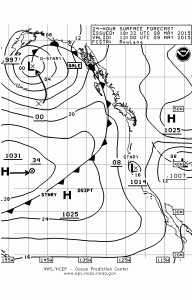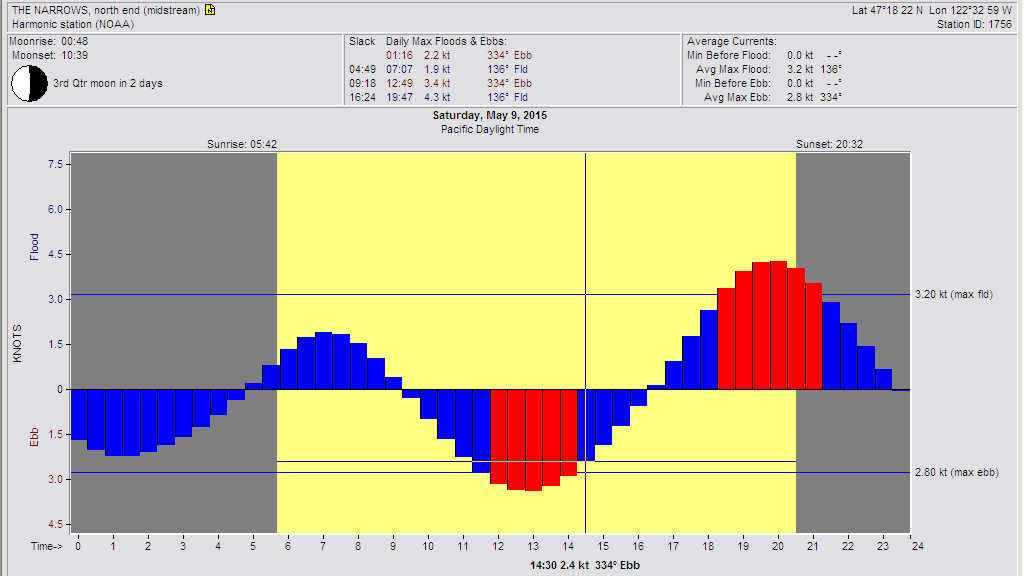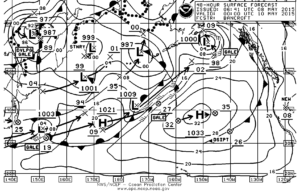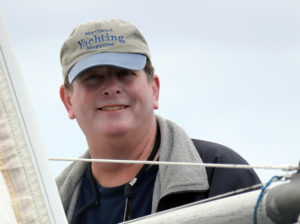![]() Hooray, Hooray, it’s the 8th of May 2015
Hooray, Hooray, it’s the 8th of May 2015
Wow! What a week! Hail, rain, breeze, then no breeze and COLD on Tuesday to 75° today and 80° tomorrow with the next rain holding off until late Monday early Tuesday. This week also demonstrated the classic Puget Sound condition that the first 24 hours that the ridge of high pressure starts to build over the NW will be when we have the best breeze out of the north with the northerly velocity dropping as time goes on.
The Wednesday night race had 15-18 knots of northerly, Thursday it was pretty calm in the morning south of Alki while at noon there was 8-10 out of the north at West Point. This morning there was breeze 4-6 knots north of Alki while south of Alki it was pretty dead. The breeze did fill down the east side first and then filled across to Vashon and Pt Robinson. Then by 1400 hours it was once again up to about 15 knots at West Point.
The bad news is that it’s going to be light tomorrow morning yet by 1100 hours we should have about 5 knots of northerly. The other bad news is that we’ll be sailing into big ebb of the day, about .8 knot at West Point at about noon. This will go to slack at about 1530 hours before going to the big flood of the day .9 knot at about 1900 hours before going to slack at 2230 hrs. This will mean that the tacticians are really going to have to keep their heads out of the boat and sharp eye on COG and SOG all day long.
Click on any image to enlarge.
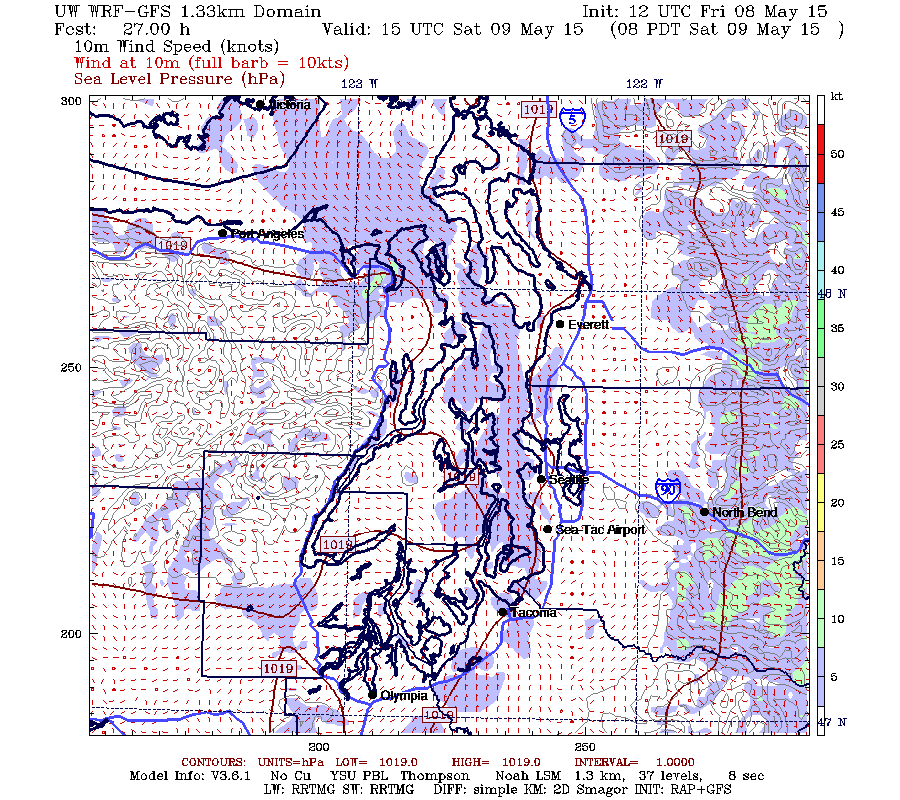

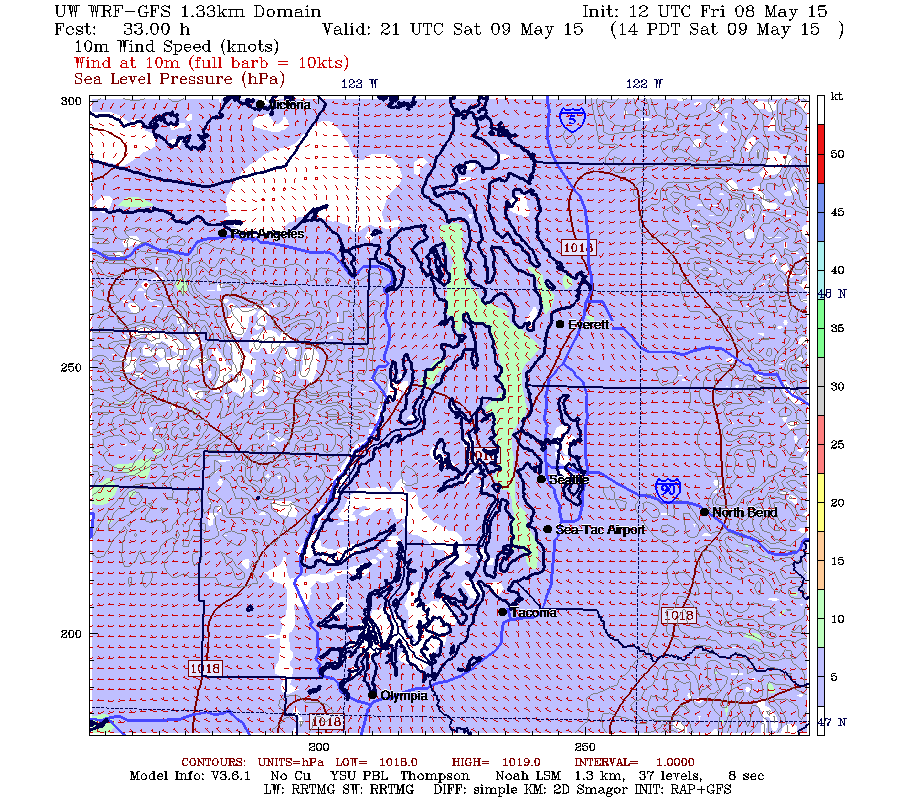
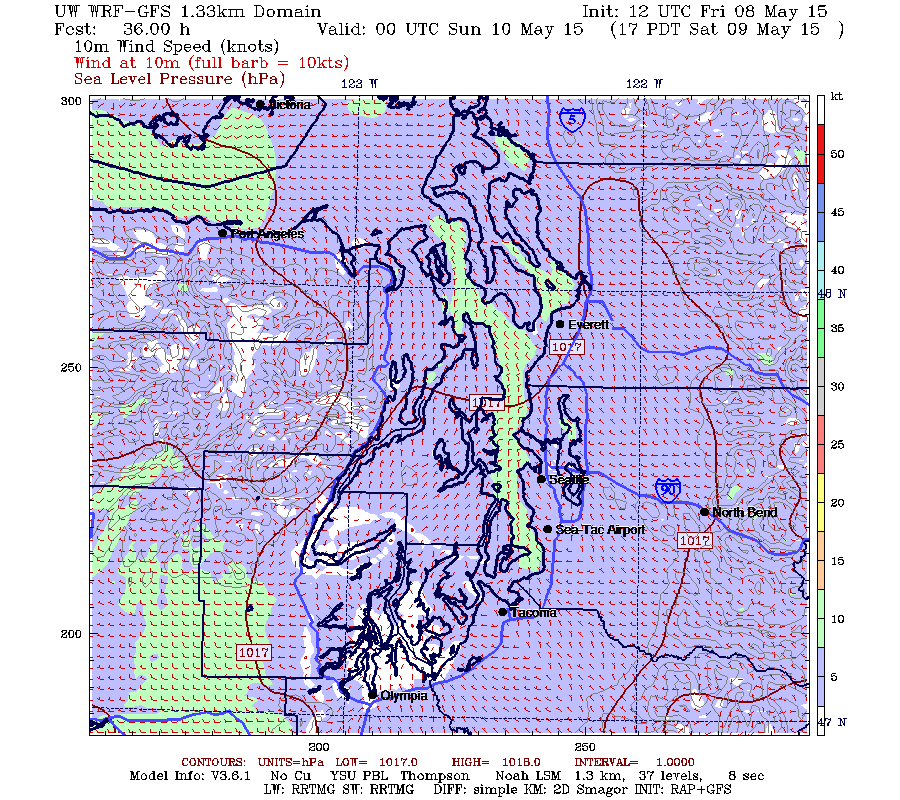
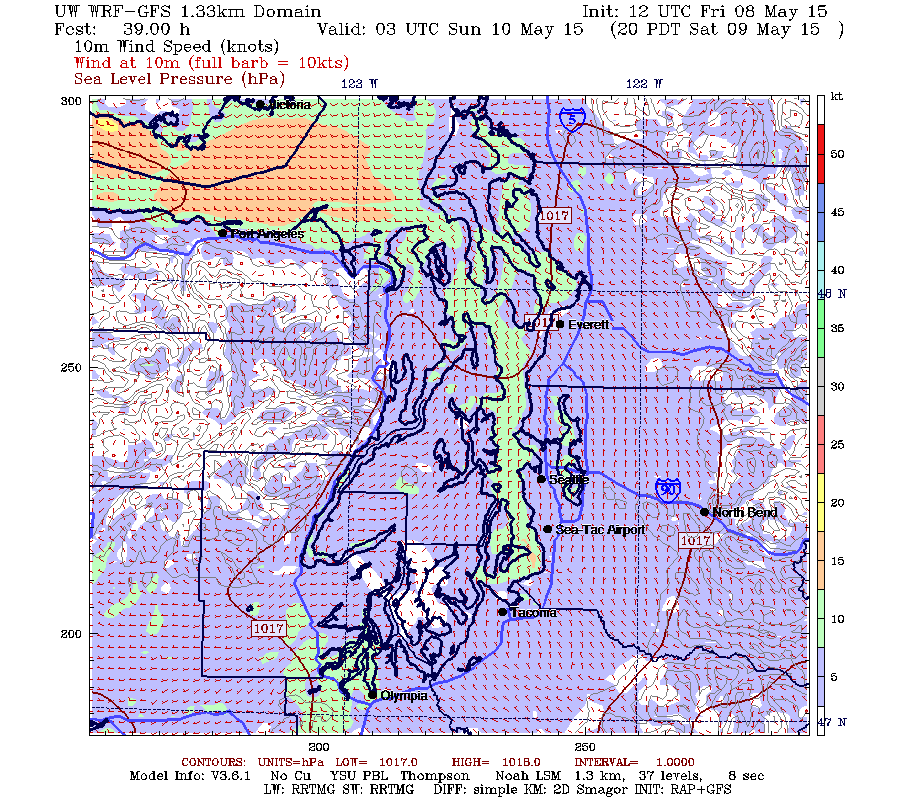


In the downwind start from Shilshole you are most likely to set on a starboard pole and then at West Point gybe under the bluff to get the localized northeasterly. This will only last to about Four-Mile Rock before you gybe back out. Remember that in the big ebb it will pay to stay off the beach from West Point south to Four-Mile because the tide ebbs hardest right along that shore. From here you’ll work the same pattern all the way to Point Robinson by gybing under the points at Alki, Brace, and Three Tree. All the while being mindful of how far off the rhumb line you’re getting because the short course is down the east side.
At Point Robinson in the mid stages of the ridge starting to decline, see the surface forecast chart, this is where life gets interesting and tacticians can be driven to near suicide. Most of the time it will be pole to the headstay on starboard as you round Pt Robinson and head towards Piner Point and then the bottom end of Vashon. There can be some great puffs that come down off of Maury Island near the gravel pit so watch for those to be coming across the water and be ready to de-power the boat from the back to the front. You know the drill: mainsheet, vang, spinnaker in that order, anything to keep the boat on it’s feet and flow attached to the rudder. As you get to the bottom of Maury Island, at Piner Point it will be time to figure out how best to get through the light spot at the south end of Vashon Island. It’s also a problem because along with much lighter air along that shore of Vashon, the ebb coming north from the Narrows also flows to the east along that shore so it can become a real parking lot. The general rule of thumb is to sail low from Piner Point to a point about halfway between Neill Point and the Tacoma Yacht Club. This will keep you in the wind and out of the tide. Once you get to that way point, aim at the houses that are about .8 mile north of the entrance to Gig Harbor. I know it’s tempting to start aiming up into Colvos but you really want to get to the west side of Colvos so have your headsail tee’d up and be ready to get rid of the kite. If it’s really light you may have to go back and forth between headsail and kite before you finally get into the steady breeze in Colvos. Ideally you’d go hard on the wind and hold starboard tack all the way to shore near Sunrise Beach before you’d tack to port.
In Colvos, the tendency is to hold the tack for as long as possible, watching the depth sounder right up to the wall. Depending on what’s happening in Colvos you might also watch as you get close to the beaches and rather than waiting as long as you can, try tacking when you hit the warm air. That’s because that is the warning that you will be sailing into a knock and less breeze. As you get to the top of Colvos you should still have ebb with you until about ½ way up the east side of Blake Island. From there you’ll want to cover your competition however generally speaking you’ll stay to the west until Restoration Point before you take that long port tack hitch across the Sound the work up under Magnolia Bluff and into the NE breeze that will be there along with some relief from the flood tide. It’s already been a long day so remember the rule that you shouldn’t sail very far inside a line drawn from Four Mile Rock to the West Point Lighthouse. Running aground here for the entire fleet to see can be very embarrassing.
Now if you’re on the short course and rounding the buoy just north of Point Robinson, you should head west towards Point Heyer until you can tack to port and come across to just under Three Tree Point. From there you’ll work the east side beaches all the way to Alki. Hopefully making long starboard tacks paralleling the beach in the localized northeasterly under each point. Your mainsheet and traveler person is going to get quite a workout. At Alki, you’ll head out on starboard tack until you can tack and lay the east end of Elliott Bay Marina. While on port tack if you get a big blast of hot air (not the usual stuff from the tactician) that has come down from InterBay, sail into it by about 50 yards and then tack to take the starboard lift as far as you can. If you fall off the wheel (the lift) or hit flood tide, tack back into Magnolia.
At West Point in the flood you’ll want to come over the bar on starboard tack as close to the lighthouse as possible without doing the tactical grounding. Hold until you can tack to port so you are laying outer buoy to the Ship Canal which will keep you about 100 yards off the beach and the area where the flood runs the hardest. Remember to stay outside the restricted area at the mouth of the Ship Canal and work up the breakwater at Shilshole until you can tack to starboard to make the finish. Remember to put some in the bank if it’s still flooding.
In the bigger weather picture, if you’re going on TransPac this summer, you have got to love how the Pacific High is already starting to set up.
Have a great race, use lots of sunblock, and finish early and then enjoy Mothers Day!
